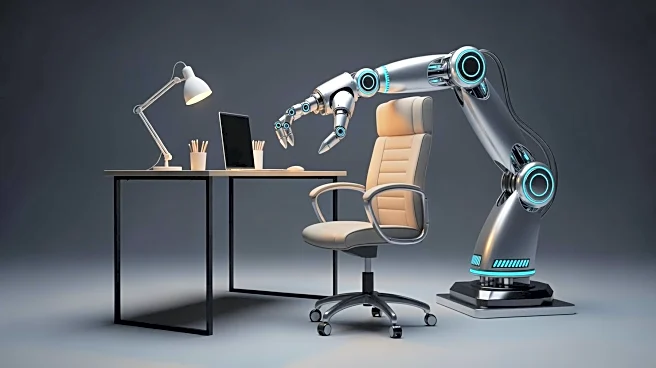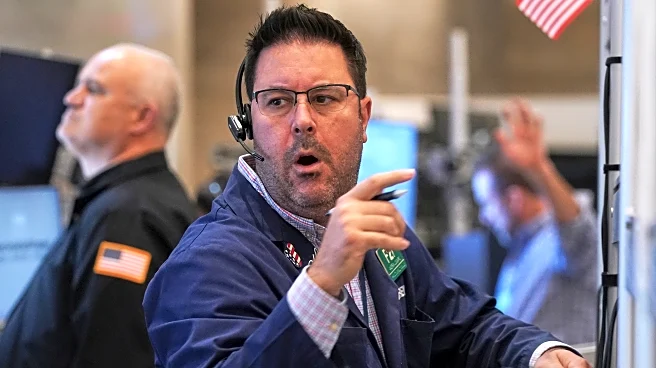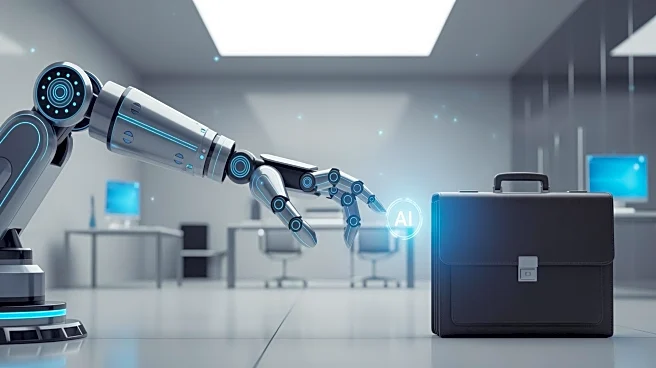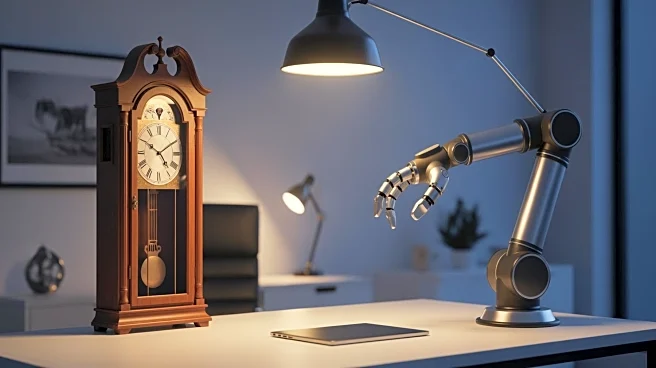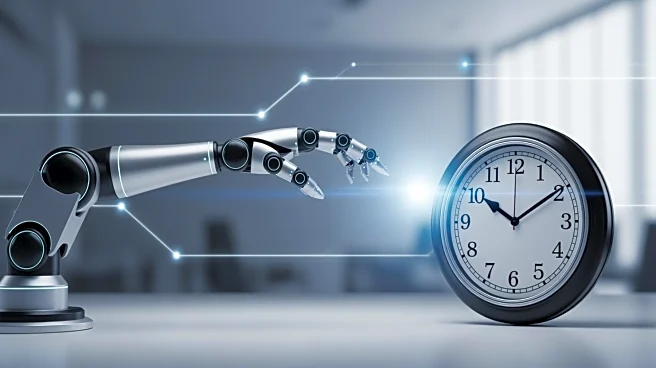What's Happening?
U.S. employers announced over 153,000 job cuts in October 2025, marking the worst October for layoffs in two decades. The total number of job cuts for the year has surpassed 1 million, driven by factors
such as artificial intelligence and automation. Technology and warehousing companies led the layoffs, with tech firms announcing 33,281 job cuts and warehousing firms axing 47,878 jobs. The surge in layoffs is attributed to automation and overcapacity from pandemic-era expansion. Nonprofit and media organizations also reported significant job losses due to reduced government funding and automation. Companies cited cost-cutting, AI, market conditions, and facility closures as reasons for the layoffs.
Why It's Important?
The widespread layoffs underscore the transformative impact of AI and automation on the U.S. job market. As companies integrate new technologies, traditional job roles are being displaced, leading to significant workforce reductions. The technology sector, a key driver of economic growth, faces challenges that could affect innovation and consumer spending. The warehousing and retail sectors are also under pressure, with job cuts reflecting shifts in consumer behavior and operational efficiencies. The layoffs have broader implications for economic stability, as reduced employment may lead to decreased consumer confidence and spending. Policymakers and industry leaders must address these challenges to support affected workers and ensure a balanced transition to a technology-driven economy.
What's Next?
The layoffs are expected to continue as companies adjust to economic pressures and technological advancements. Major corporations like Amazon, Target, and UPS have announced plans to cut thousands of positions, indicating ongoing workforce reductions. The Federal Reserve may consider further interest rate cuts to stimulate economic activity, although the effectiveness of these measures remains uncertain. Policymakers and industry leaders will need to develop strategies to support workforce retraining and adaptation to new technologies. The cultural shift towards automation may redefine job roles and require a reevaluation of employment standards and protections.
Beyond the Headlines
The integration of AI and automation raises ethical and social concerns about the displacement of workers and the future of employment. As industries realign to incorporate new technologies, there is a need for policies that support workforce retraining and adaptation. The cultural shift towards automation may redefine job roles and require a reevaluation of employment standards and protections. Long-term, the integration of AI could lead to increased productivity, but the transition period poses challenges for workers and employers alike.
